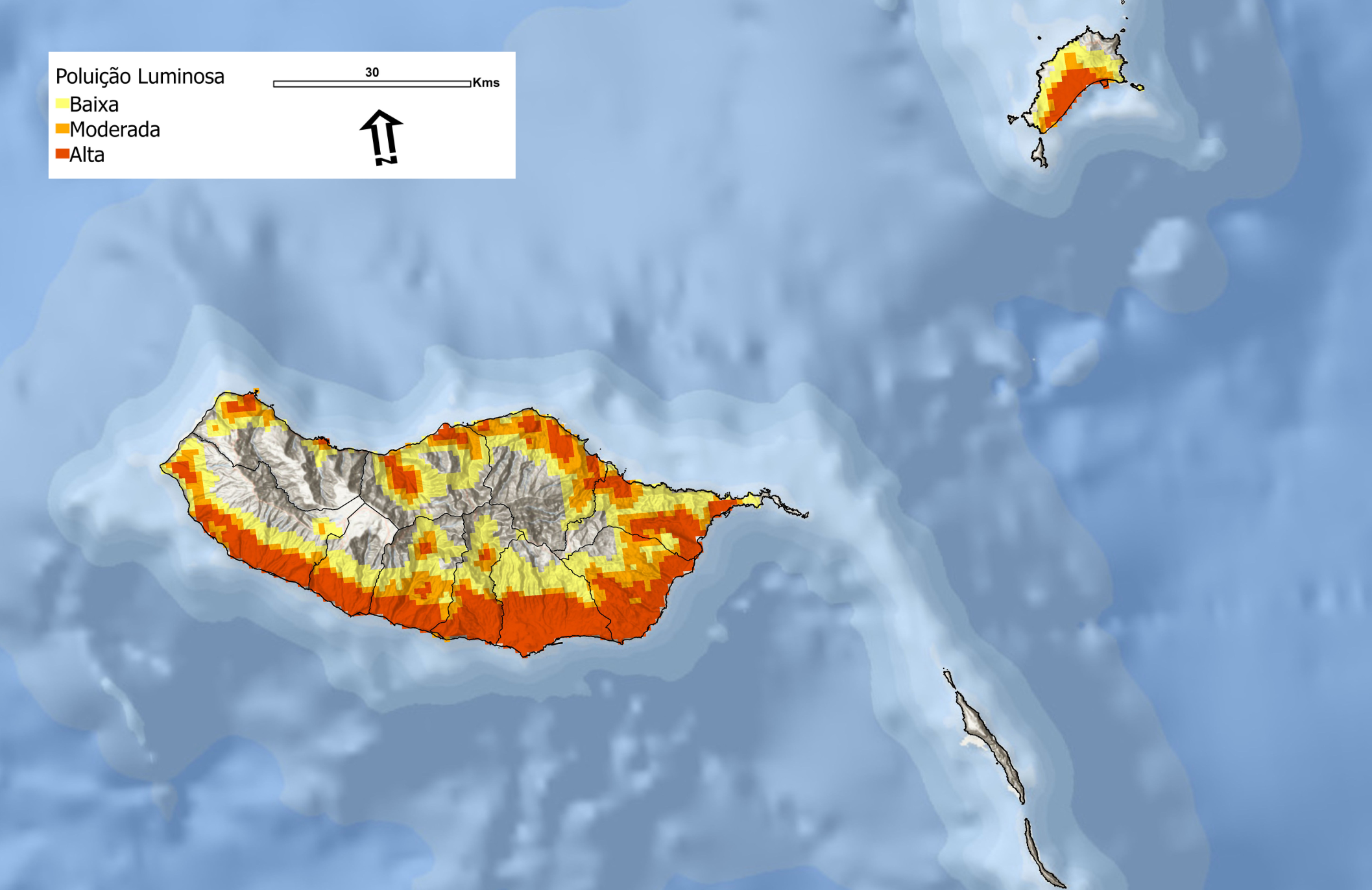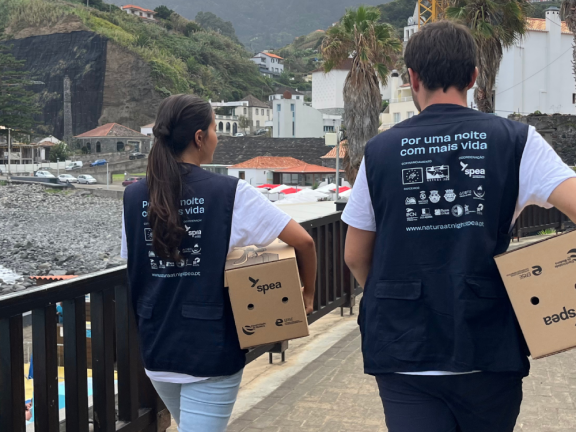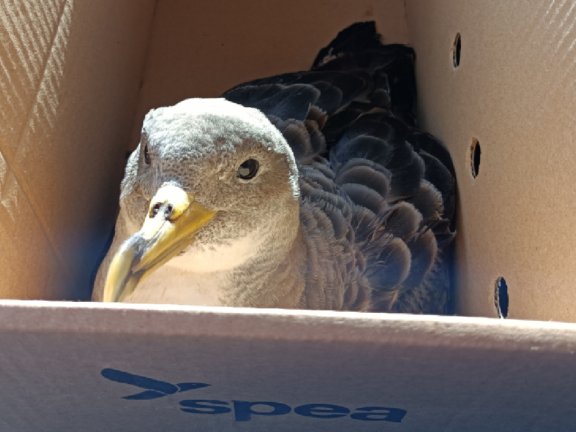Quantity is not always synonymous with quality, especially when it comes to public lighting. Streets illuminated with well-directed lights and with the correct intensity are safe, nature-friendly and do not waste energy and money.
With this article, the Sociedade Portuguesa para o Estudo das Aves (SPEA) intends to explain what light pollution is, what are its impacts on nature and public health and to demystify some of the measures that are being taken in the region.
WHAT IS LIGHT POLLUTION?
Light pollution is essentially all the excessive, poorly directed or intrusive artificial lighting. Lighting our streets and homes is important and necessary, but over the years, lighting solutions that are not adapted to the needs of each space have led to negative consequences for animals, ecosystems and even human health.
Juvenile seabirds that cannot find their way to the sea, birds that sing all night and die from exhaustion, insects (important pollinators of our agriculture) that end up dying with burnt wings when flying around lamps, turtles that lay their eggs in the wrong place because they mistake city lights for stars… people who stop resting effectively at night because of excessive lighting… these are just some of the consequences of excessive lighting on our planet.
Today, over 80% of the human population lives in places with polluted night skies and, even in areas far from cities, we are increasingly affected by the diffuse glare caused by large urban centres.
It is not just another streetlamp. Each streetlamp emits light into the atmosphere that spreads out, reaching the most remote protected areas and the depths of the oceans. It is estimated that only 1/3 of protected areas have unpolluted night skies.
TRUE OR FALSE?
Light pollution affects humans.
TRUE: Excessive lighting influences our circadian cycle – our body’s daily rhythm, which governs our rest patterns but also other vital processes such as the production of different hormones. We all feel better after a refreshing night’s sleep. But light pollution affects more than that: it contributes to impaired vision, stress and associated conditions such as depression and mood swings. There is also evidence that reduced melatonin production due to increased light exposure may increase the risk of hormonally related cancers such as breast cancer and prostate cancer.
The more streetlights there are, the safer my city is.
FALSE: crime is a problem that needs to be tackled from several perspectives. Recent studies indicate that correcting lighting for more efficient solutions does not result in an increase in crime.
Light pollution is a problem for cities, it does not affect parks and nature reserves.
FALSE: light in our cities can travel more than 10 km, so our protected areas and the species there suffer from light pollution, even if they have no luminaires.
Public lighting causes confusion for seabirds.
TRUE: On leaving their nests, young, inexperienced birds become disorientated during their first flights to the sea because of the lighting in cities. They often end up colliding with infrastructure and buildings, and can be injured (sometimes fatally) or fall to the ground, where they are vulnerable to dangers such as dogs, cats and cars. One way to avoid this outcome is to carry out blackouts in the most crucial places, days and times, creating a kind of safe “greenway” towards the sea.
Cities are increasingly illuminated.
TRUE: The Earth’s atmosphere is now thousands of times more illuminated than it was 200 years ago. Many researchers consider light pollution to be one of the fastest growing and most widespread forms of pollution in the world. In urban and industrialised areas, the problem is exacerbated by air pollution: particles of pollutants in the air reflect and diffuse light, further increasing the brightness of the surrounding sky – all over the planet, night is being dimmed.
If we use LEDs we already save energy, we don’t need to switch off luminaires.
FALSE: Despite being more efficient, LED lights still emit artificial lighting and affect biodiversity. At the moment we are implementing LED lights but in a more yellow colour, less harmful for animals and also more comfortable for humans. Moreover, by reducing the number of luminaires (in places where they are not needed), we are also increasing energy and financial savings for all citizens.

How can I Contribute?
A simple action, a simple switch off, the right choice when changing the light lamps in your home, can make all the difference.
Use warm-coloured LED lamps
Use LED lamps in neutral or warmer colours (avoid white light). This way you keep energy consumption low, while at the same time enjoying a more comfortable light that doesn’t cause too much glare.
Support well planned street lighting
Well-planned cities are cities with ordered luminaires, with lights directed towards the ground or with shields that block the emission of light into the atmosphere. This way we can save around 50% of the lighting bill and no waste.
Turn off the lights when they are not needed
Technology is one of the great allies of this project. In addition to LEDs, there are light intensity reducers, which allow you to reduce the power of the lighting in low traffic areas or after the hour of greatest activity in cities. Reducing the operating hours of lighting systems through timers, motion detectors or schedules are some of the actions that we want to implement in Madeira, and that you can use to save electricity in your home.
Article published in Diário de Notícias on 13/02/2023.




